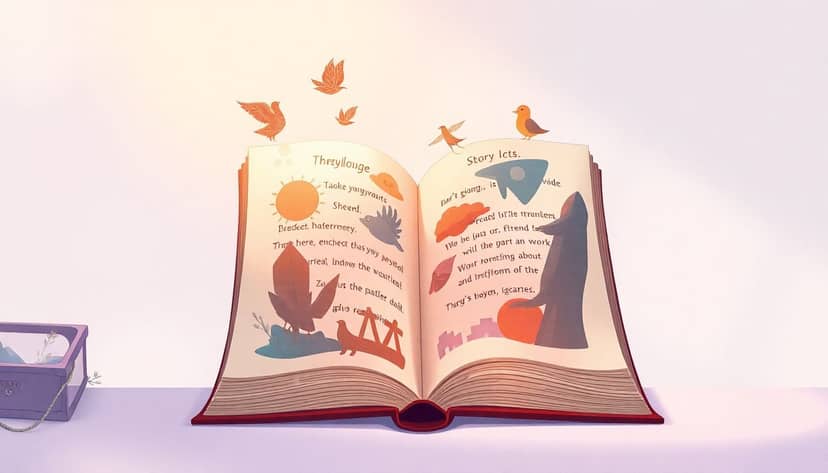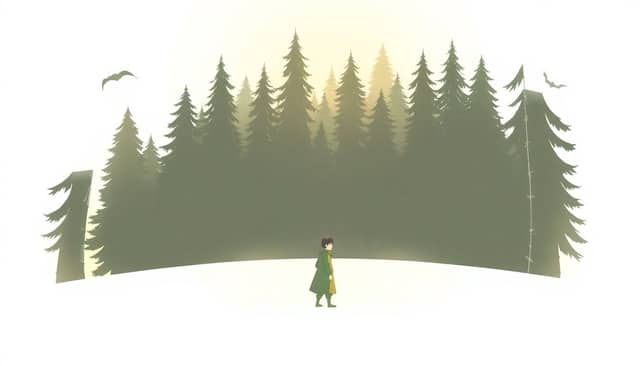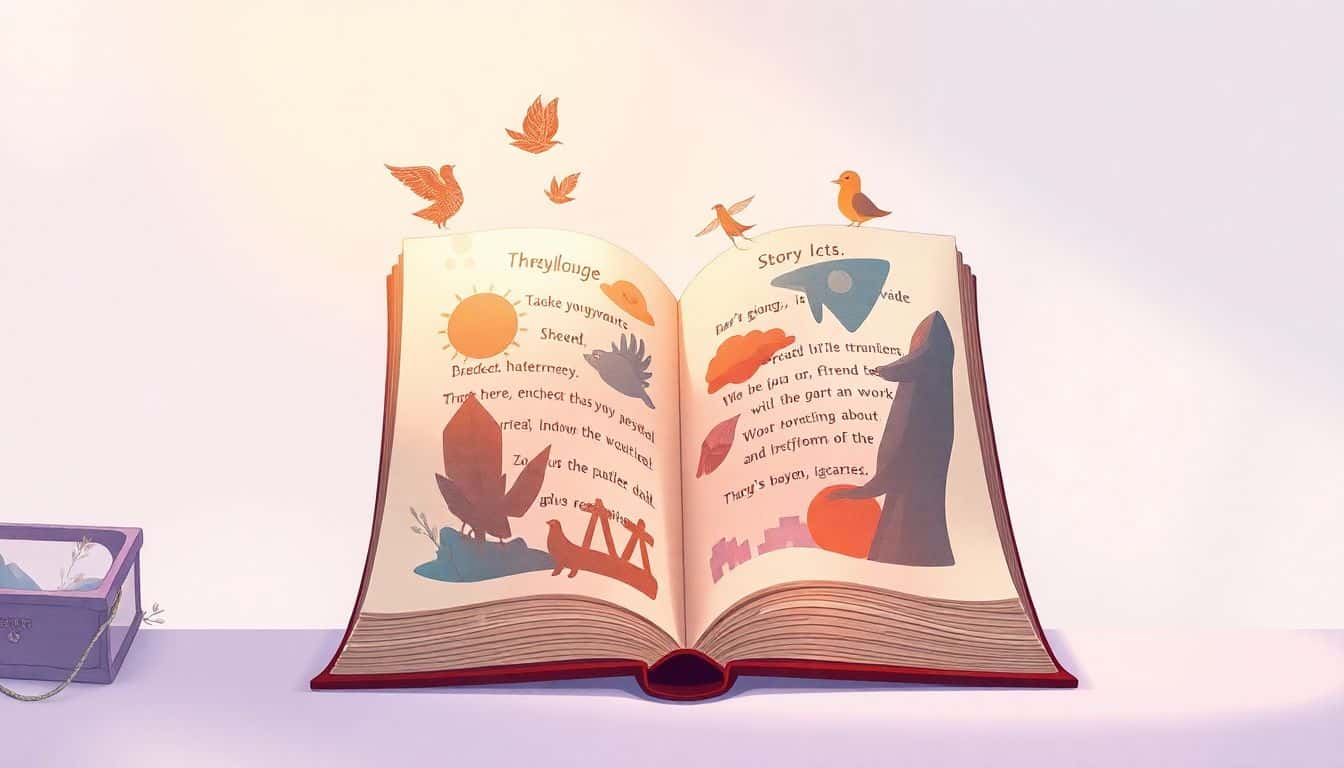Table of Contents
We all know stories sometimes feel predictable and maybe you’re tired of guessing what’s next. That’s fair—lots of readers and writers feel this way because, honestly, many plots follow similar paths.
The good news is, by recognizing common story arcs like “Rags to Riches,” the popular “Hero’s Journey,” or even the dramatic “Icarus” arc, you’ll start spotting patterns and mixing things up effortlessly.
Stick around—I’ve laid out clear, everyday-examples-focused steps that’ll help you identify and play with these arcs in fun, fresh ways.
Key Takeaways
- Story arcs shape how narratives develop, guiding characters from beginnings, through conflict, to satisfying endings.
- Common story arcs include “Rags to Riches,” “Riches to Rags,” the “Hero’s Journey,” the relatable “Man in a Hole,” and cautionary “Icarus” or “Oedipus” stories of downfall.
- “Rags to Riches” tales highlight overcoming struggles to achieve success, facing setbacks along the way before reaching lasting happiness.
- “Riches to Rags” showcases decline due to character flaws like pride, teaching valuable lessons about consequences.
- Mixing multiple arcs—like “Hero’s Journey” with “Rags to Riches”—can lead to stronger storytelling and more relatable characters.

Step 1: Understand the Most Common Story Arc Types with Examples
You’ve probably heard the term “story arc” but might not really know what it involves. Simply put, a story arc is a narrative path your story follows, showing how characters and events develop from start to finish. Good stories usually have clear arcs: they set a scene, build tension, reach an exciting or emotional high point, then wrap things up nicely at the end. The most common basic arc involves five key stages: exposition, rising action, climax, falling action, and resolution.
But it’s not always that simple. Some stories follow patterns like the “Hero’s Journey,” where a character faces huge challenges, grows stronger, then returns home changed—think of Harry Potter or Katniss Everdeen. Or the “Man in a Hole” arc, where someone faces trouble, solves it, and climbs back out. You might come across arcs known as “Riches to Rags,” where a character loses everything, or “Rags to Riches,” where someone goes from poor or ordinary to wealthy or successful—perfectly shown in novels like “Great Expectations” or movies like “Slumdog Millionaire.”
To write effectively, it’s useful to clearly understand these different story arcs and when each makes sense. For practice, you can pick a type, say the “Rags to Riches” or even horror story plots, and just have fun experimenting with characters and scenarios to see which story arc fits best.
Step 2: Learn How the “Rags to Riches” Story Arc Works
Everyone loves watching a character overcome difficulties and achieve success—that’s why the “Rags to Riches” story arc never seems to get old. It involves your character starting out poor, oppressed, or disadvantaged, then rising through hard work, bravery, or luck to achieve wealth or fame. But at some point, that newfound success usually faces threats, making the character learn vital life lessons before finally securing happiness or resolution.
A good “Rags to Riches” tale illustrates this well through clear stages:
- Initial hardship: Show clearly how your character suffers, struggles, or dreams big but lacks resources.
- Opportunity or discovery: Introduce an event or person that sparks a turning point—perhaps they discover a talent, inherit a fortune, or get offered the chance of a lifetime.
- The rise to success: Your character experiences rapid success and achievement, easily relatable like in Cinderella, “The Pursuit of Happyness,” or sports movies.
- A major setback or conflict: Just when things seem great, problems emerge, threatening their accomplishments (facing a competitor, betrayal, or personal weakness).
- A successful resolution: Your character learns essential lessons, overcomes the setback, and achieves genuine, lasting success or happiness.
Try this in your next writing project—for instance you might want to explore vivid winter writing prompts—to help inspire your character’s transformative journey from struggle to triumph.
Step 3: Recognize the “Riches to Rags” Story Arc and Its Key Themes
The “Riches to Rags” arc flips the previous story on its head. Instead of overcoming struggles, your character starts with success, privilege, or wealth, then steadily loses everything they hold dear due to misfortune, poor decisions, or character flaws. You often see this pattern in tragedies or cautionary tales, like Shakespeare’s “King Lear” or the more modern “Breaking Bad.”
Key themes in a “Riches to Rags” narrative include hubris—the character’s sense of pride or arrogance that eventually causes downfall, crime and punishment, or the fragility of wealth and status. Usually, this arc teaches audiences essential life lessons by showing consequences clearly and emotionally.
If you’re trying your hand at writing darker themes or tragedy-focused works, consider using realistic fiction writing prompts to kick off ideas that highlight a character’s arc from glory to loss effectively and believably.

Step 4: Identify Popular Examples of the “Hero’s Journey” Story Arc
If you’re curious what exactly the “Hero’s Journey” is, it’s a story structure where an ordinary person goes on an adventure, faces big challenges, and comes home changed. You’ve definitely seen it in action—think about classics like “Star Wars,” “The Lord of the Rings,” or “The Lion King.”
To break it down, the journey usually starts with the hero living a normal but unsatisfying life. Something happens that kicks them out the door into the unknown (Harry Potter getting his Hogwarts letter).
They face tough challenges and usually get a mentor (hello, Gandalf or Obi-Wan), make some friends along the way (like Frodo forming the Fellowship), and ultimately face their biggest fear or enemy (Luke confronting Darth Vader).
After winning or at least surviving this ultimate challenge, they return home or back to the original situation—but they’re stronger, wiser, or more mature because of everything they’ve experienced.
When creating your own version of the hero’s journey, pick clear events that force your main character out of their comfort zone. Make sure each challenge serves a purpose and changes your hero in some meaningful way, helping your audience connect deeply with their transformation.
Step 5: Discover the Characteristics of the “Man in a Hole” Story Arc
The “Man in a Hole” story arc isn’t literally about a guy stuck in a hole (although it can be, if you’re into that kind of drama!). What it really means is your protagonist starts in an okay place, faces unexpected trouble that drags them down, and then—through struggle and perseverance—they get back up out of the mess.
It’s actually one of the most relatable story structures because, let’s face it, life often feels exactly like that—one moment you’re fine, the next you’re dealing with a crisis, but eventually you pull yourself together again.
A famous example would be Disney’s “Finding Nemo,” where Marlin has a decent life but then loses his son. After hitting this low point, he embarks on a mad journey to recover Nemo, eventually rising to a happier resolution and regaining his courage.
For writers trying out this arc, consider plotting clear points: start with normal life, introduce an unexpected problem to create tension, and then have your character solve that problem in their own realistic way. To get inspired, try experimenting with unusual or funny scenarios, like these funny writing prompts for kids, to keep your story fresh and engaging.
Step 6: Get Familiar with the “Icarus” Story Arc and Notable Examples
You might know the Greek story about Icarus, who flew too close to the sun on wings made of feathers and wax. Spoiler alert: his wings melted, and he fell. Ouch. The “Icarus” arc is similar—your main character achieves incredible success only to lose everything because of their ambition or pride.
A great modern example is the movie “The Wolf of Wall Street,” where success quickly spirals out of control due to excess. Another is “Scarface,” where ambitious Tony Montana rises quickly but crashes spectacularly due to greed and recklessness.
If you’re writing this kind of arc, it’s useful to clearly portray how your character’s best trait (like ambition or bravery) becomes their downfall. Don’t make the mistake of turning them into a plain villain—instead, focus on genuine human flaws readers can recognize. Need a compelling start? Check out some realistic fiction writing prompts that match this tragic yet relatable arc.
Step 7: Look at the “Oedipus” Story Arc and Understand Its Structure
The “Oedipus” arc comes from ancient Greek drama, where a character tries hard to avoid a dark fate but unknowingly ends up fulfilling it anyway. Yup, talk about a rough deal. This tragic story arc emphasizes fate, truth, irony, and the human resistance to accepting reality.
Beyond the classic Greek “Oedipus Rex,” more modern examples include the film “Minority Report,” where the protagonist desperately tries to avoid his future but ends up confirming it.
For your own writing, play around with revealing little clues long before your climax. This technique, known as foreshadowing, keeps readers intrigued. Remember, the final revelation hits hardest if the reader has been unknowingly following breadcrumb trails all along.
Step 8: Know the “Cinderella” Story Arc and See How It Appears in Stories
Everyone’s heard the Cinderella story—start low, find success or happiness, lose it all temporarily, then regain it for good. It’s different from “Rags to Riches” because the character experiences loss and hardship again after gaining success, making the eventual victory sweeter and more meaningful.
Films like “Pretty Woman” or even “Rocky” echo this story shape. Our heroes taste success and happiness earlier, but conflicts arise, stripping them of their progress temporarily until they fight back hard to secure their happy ending.
If you’re tackling the “Cinderella” arc, carefully pace your drama—initial struggle, quick success, deep setback, and a satisfying comeback. Remember that your character needs to learn something valuable during their setbacks. If you feel stuck coming up with genuine character growth moments, you might try using winter writing prompts to spark fresh ideas.
Step 9: Find Out How Writers Combine Multiple Story Arcs for More Interesting Plots
Here’s some good news—you don’t need to stick with only one story arc! Cleverly combining different arcs can help make your characters and their stories way richer and more interesting.
Plenty of stories blend structures seamlessly—like Harry Potter which mixes “Rags to Riches,” the “Hero’s Journey,” and “Man in a Hole.” Different arcs layered together help keep readers invested by increasing depth and emotional connection.
To do this yourself, first outline your main character’s journey clearly with your main arc. Then sprinkle elements from another arc—as long as it fits your character’s realistic motivations and challenges. Consider dipping into specific genres for plot twists or interesting details, such as horror story plot ideas, to add unexpected layers or thrilling turns.
The key is to balance arcs clearly—don’t overcomplicate things, because readers still want to follow along easily. Always remember your character’s essential story, then combine arcs gently to spice things up and make them more believable and entertaining.
FAQs
The “Rags to Riches” arc depicts a protagonist who rises from hardship or poverty to success, prosperity, or fame. In contrast, “Riches to Rags” portrays characters who start with wealth or power but ultimately encounter failure or misfortune.
Yes, writers often merge different story arcs to craft layered plots with greater depth and complexity. By using multiple arcs, authors create engaging stories that highlight varied character experiences and emotions.
The “Hero’s Journey” resonates because it reflects universal experiences such as self-discovery, overcoming adversity, and transformation. Audiences connect deeply to characters facing relatable challenges and celebrating meaningful victories.
The “Man in a Hole” arc involves a character initially facing problems or setbacks, then working to overcome them. This approach creates tension and emotional payoff, especially when the character emerges stronger and wiser.



